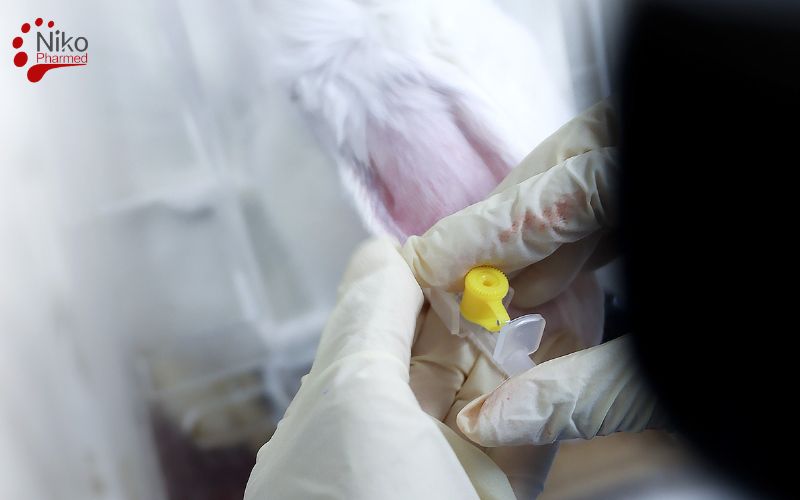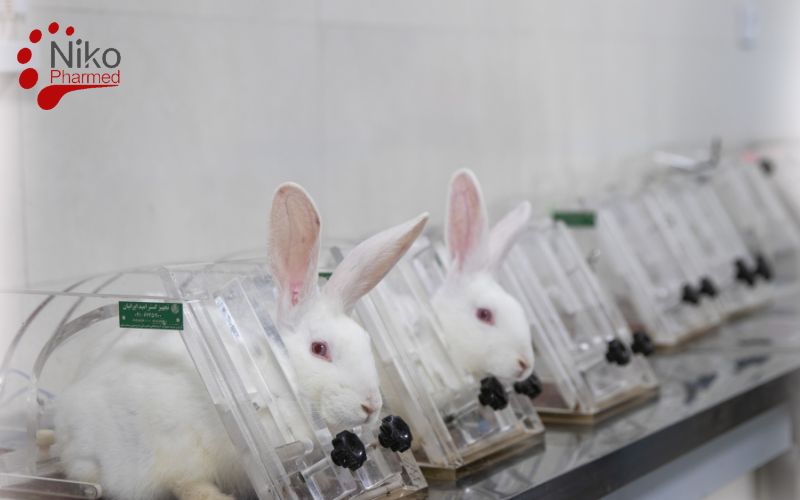What Is Pyrogen Testing?
Pyrogen Testing is an essential safety measure used to identify fever-causing contaminants in pharmaceutical products and medical devices intended for human use. By detecting the presence of pyrogens, these tests help prevent potentially harmful febrile reactions in patients. Regulatory authorities require pyrogen testing as a standard part of the quality control process for the release of many injectable and implantable products.
Several established methods are used to detect pyrogens, including the rabbit pyrogen test (RPT), an in vivo assay that monitors temperature changes in rabbits after sample administration. In vitro alternatives include the bacterial endotoxins test (BET)—which comprises gel-clot, kinetic turbidimetric, and kinetic chromogenic methods and is commonly known as the Limulus amebocyte lysate (LAL) test—along with the monocyte activation test (MAT) and the recombinant Factor C (rFC) assay. The choice of method depends on the nature of the product and the type of pyrogens expected, ensuring comprehensive safety evaluation before clinical use.
It is important to mention that within the ISO 10993 biological evaluation framework for medical devices, pyrogen endpoints complement biocompatibility testing to provide an integrated assessment of patient safety and inflammatory risk.
What are Pyrogens?
Pyrogens are substances that can trigger fever by disrupting the body’s temperature regulation system. Once they enter the bloodstream, they travel to the brain and interfere with the hypothalamus—the area responsible for maintaining normal body temperature.
Pyrogens alter the balance of temperature-sensing neurons, dampening those that detect warmth and stimulating those that sense cold. This misleads the body into thinking it’s colder than it actually is, prompting it to raise its internal temperature.
Pyrogens come from various sources. Bacterial endotoxins, such as lipopolysaccharides (LPS) from Gram-negative bacteria, are a major type. Additionally, bacterial exotoxins produced by some Gram-positive bacteria can also act as pyrogens.
Common Test Methods for Pyrogen Testing
Rabbit Pyrogen Test (RPT)
an in vivo assay in which test samples are administered to rabbits, and their body temperature changes are monitored. A fever response indicates pyrogen presence. This traditional assay can detect both endotoxin and non‑endotoxin pyrogens, but is time-consuming, variable in reproducibility, ethically concerning due to animal use, and may not always predict human response accurately.
Bacterial Endotoxin Test (BET or LAL assay)
an in vitro enzymatic test using Limulus amebocyte lysate or recombinant Factor C (rFC). This method is highly sensitive to endotoxins and offers rapid quantitative or qualitative readouts via gel‑clot, turbidimetric, or chromogenic techniques. However, it only detects endotoxin—not other pyrogens—and may show assay interference in certain samples.
Recombinant Factor C (rFC) assay
functionally similar to LAL/BET but uses a synthetic version of Factor C, avoiding use of horseshoe crab blood. It detects endotoxins selectively with comparable sensitivity and minimal environmental impact.
Monocyte Activation Test (MAT)
an in vitro human-cell‑based assay that measures cytokine release (e.g. IL‑6, TNF‑α) from human monocytes after exposure. It detects both endotoxin and non‑endotoxin pyrogens, provides quantitative results, and is considered more human-relevant than RPT. Its adoption is increasing, with regulatory preference growing in Europe (Ph. Eur.) while the FDA is still transitioning.
Nikopharmed Pyrogen Testing Lab
At Nikopharmad Laboratory Network, we specialize in delivering accurate, high-quality, and compliant pyrogen testing services for pharmaceutical products and medical devices. As an ISO 17025 certified and ILAC-accredited laboratory, we adhere to internationally recognized standards, ensuring our pyrogen testing meets the strictest global regulatory and scientific requirements.
For ethylene oxide–sterilised medical devices, Residual Ethylene Oxide Gas Testing is often performed in parallel with pyrogen and endotoxin assays to demonstrate control of both sterilant residues and fever-inducing contaminants in accordance with ISO 10993-7 and pharmacopoeial requirements.
To request testing or a complimentary consultation contact Nikopharmad
Why Choose Nikopharmad Laboratory for Pyrogen Testing?
ILAC Accreditation & ISO 17025 Certification
Nikopharmad proudly holds ISO 17025 certification and ILAC accreditation, validating our technical competence and commitment to quality in pyrogen testing. These certifications ensure that our testing methods—including Rabbit Pyrogen Test (RPT), Bacterial Endotoxin Test (BET), and Monocyte Activation Test (MAT)—are conducted under rigorously controlled conditions and in line with global pharmacopoeial standards (USP, EP, JP).
Scientific Expertise and Advanced Technology
With deep expertise in in vivo and in vitro pyrogen testing, our experienced team utilizes validated protocols and cutting-edge instrumentation to detect both endotoxin and non-endotoxin pyrogens. Our specialists are trained to interpret complex data with scientific precision, ensuring the safety and regulatory readiness of your products.
Fast Turnaround, Reliable Results
Time is critical in drug and device development. At Nikopharmad, we are committed to delivering efficient, dependable pyrogen testing results without compromising accuracy. Our streamlined processes enable your products to advance through regulatory milestones swiftly and confidently.
Confidentiality and Data Integrity
We strictly uphold the confidentiality and security of your product information and proprietary data. All testing procedures are conducted under strict data protection protocols, giving you complete assurance of privacy and trust throughout the testing lifecycle.
Global Regulatory Compliance Support
Whether your product is bound for the FDA, EMA, or other international markets, Nikopharmad ensures that your pyrogen testing complies with relevant regulatory frameworks. Our documentation and testing approach are tailored to meet submission requirements for a seamless path to market authorization.
Choose Nikopharmad for Your Pyrogen Testing Needs
By partnering with Nikopharmad Laboratory, you are selecting a globally trusted institution that combines scientific rigor, regulatory insight, and operational excellence. Our certified testing environment, expert personnel, and commitment to quality make us the ideal choice for ensuring your products are pyrogen-free, safe, and compliant—ready to meet the highest international standards.


